-
About
- About Listly
- Community & Support
- Howto
- Chrome Extension
- Bookmarklet
- WordPress Plugin
- Listly Premium
- Privacy
- Terms
- DMCA Copyright
- © 2010-2025 Boomy Labs


Material requirement planning (MRP) is a method to craft a plan for the necessary materials for manufacturing. You need to answer the questions of what types of materials are required, their quantity and last but not the least at what time you want them. Claiming is simpler than getting it done. It seems true in this case. For seeking the response of these queries, quite work is to be done.

The process of capacity planning is essential to manufacturers, as it helps to ensure that they are able to meet demand for their products within a given time period, as well as optimize whatever capacity is available.
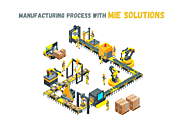
When we talk about manufacturing and production, terms such as a Request for Quotation (RFQ) and Sales Orders appear. These terms are essential elements of a product configurator module in any manufacturing management software to manage and monitor all important business activities – work orders, shop floors, financials and more.

Enterprise Resource Planning (ERP) is a fully-featured tool catering all your business functions e.g., material requirement planning, purchase orders, human resources and much more. Talking about the financial aspects of your business, manufacturing ERP systems also facilitate that.

Most companies start to understand that they may need to implement a new Enterprise Resource Planning (ERP) system slowly, over the course of many months (and, in some cases, years). At some point, the realization that a change is necessary accelerates, as it becomes clear that they are unable to adequately, let alone easily, meet the requirements of their customers.
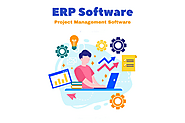
A number of issues exist when you look into the project management phases. Everything needs to be planned cautiously since you have to fulfill the demands of the stakeholders and much more.
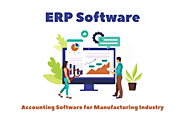
Adapting to new technological changes is vital to grow as a company by streamlining your business and making all activities more organized. Unfortunately, managing ...

After what has likely been many, many months, or even years, your new enterprise resource system (ERP) is finally ready for users. The question now becomes, how best to train them?

Implementing a new Enterprise Resource Planning (ERP) system is a huge task, however, it is important to create an ERP implementation timeline at the start.
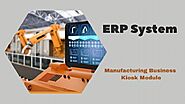
ERP system is designed to handle all of the main business roles. What if you work on an ERP solution for your manufacturing business which is having a Kiosk module? It is basically a shop floor data collection software which is integrated with ERP software.

No business can afford repeatedly made mistakes. It can hurt your business in terms of time and money that will eventually push your clients to see your competitor. If you want your customers to keep knocking at your door, you must avoid following common mistakes by using an ERP software.

Project Management is a tool in MIE Trak PRO that ties all your project information together. It allows organizations the ability to supervise on-going projects and keep track of budgets, task distribution, resource planning, and more.
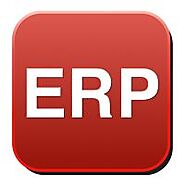
In manufacturing ERP software, a product configurator is believed to play a crucial role in streamlining the queue of manufacturing processes. What it does basically optimizes each and every task of manufacturing from design to order and so on. Scaling up the manufacturing ERP systems’ capacity.

We live in the world of constant digital transformation. Anticipating the new business opportunities and future needs and adapting to new consumer behaviors is one of the main challenges.
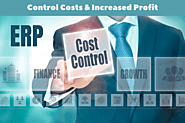
Want to control and improve your job costs? Use an ERP system for accurate job costing – and, identify profit margins. As a manufacturer, you always need to track the true costs involved in a manufactured item, including tangible and intangible resources.

Implementing a new enterprise resource management (ERP) system can seem like a huge task, and that’s probably because it is. Chances are that once the decision to implement an ERP has been made, there are still many details that haven’t yet been nailed down, whether it’s which ERP to purchase, who will be leading the project, or when and how the software should go live.
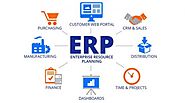
In the manufacturing business, working on an ERP solution is beneficial in many ways. Not just your tasks get automated, but your expenses become minimized and revenue turns out to be double.

Nearly all ERP (Enterprise Resource Planning) vendors employ a number of project managers (PMs) to ensure that implementations go smoothly and end in success. Often, because of this, it doesn’t occur to the company implementing an ERP to consider hiring a project manager of their own. However, just as there are benefits to having a PM on the vendor side, there are many benefits to utilizing a PM internally on the implementing company’s end as well.

Every business, big or small, needs to manage and monitor ordered materials, supplies and finished products in order to function smoothly.

Implementing an enterprise resource planning (ERP) system is a huge task, no matter the size of the company or the industry in which it will be utilized. Although thousands of ERP implementations are planned each year, unfortunately, not all are successful. What makes some plans work, while others fail? Communication.
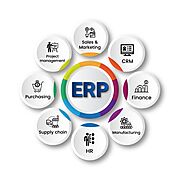
Handling manufacturing organizations definitely need ERP software because now and then you might face issues in production equipment. This sudden flaw might hinder your production capacity and waste the workers’ time as well. We all have heard “prevention is better than cure”. This proverb applies to this situation perfectly fine.

3D model files involved in product development processes require a quick, intuitive, and powerful design functionality. For this, SolidWorks CAD software is one of the most efficient tools, leaving no room for errors even when users need to transfer the product designs into an ERP system.

This Quick Tip is part of a series on the six rules of a successful ERP implementation. The first rule is to provide full management support to the implementation, the second rule is to have a system champion, the third rule is to get employee buy-in, and the fourth rule is to have written plans for the ERP implementation.

Warehouse management and maintenance is vital for manufacturing business success. The efficient, accurate and steady flow of products in and out from the warehouse defines how well you are managing it. However, to keep everything running smoothly, you need to put in a lot of time and effort. And, for this, you must watch out for the key issues that generally happen in any warehouse and must be solved at any cost for successful inventory management.Let’s take a look on these problems and see how an ERP software could be your savior.Inefficient Operations: A flawless warehouse management requires only one and the most efficient way to get things done from one to another point. It could be a real pain in the neck if you have a high volume of goods, people and raw material moving through your warehouse – the case in point here is manufacturing and production. You need everything run and every person performs as efficiently as possible and that’s where a warehouse ...

You tend to create a sales order when your customer approves the quotation. Undoubtedly, you can create a sales order by hand. But this practice shouldn’t be carried out anymore. In current times, there are manufacturing ERP systems which could make your life easy.
